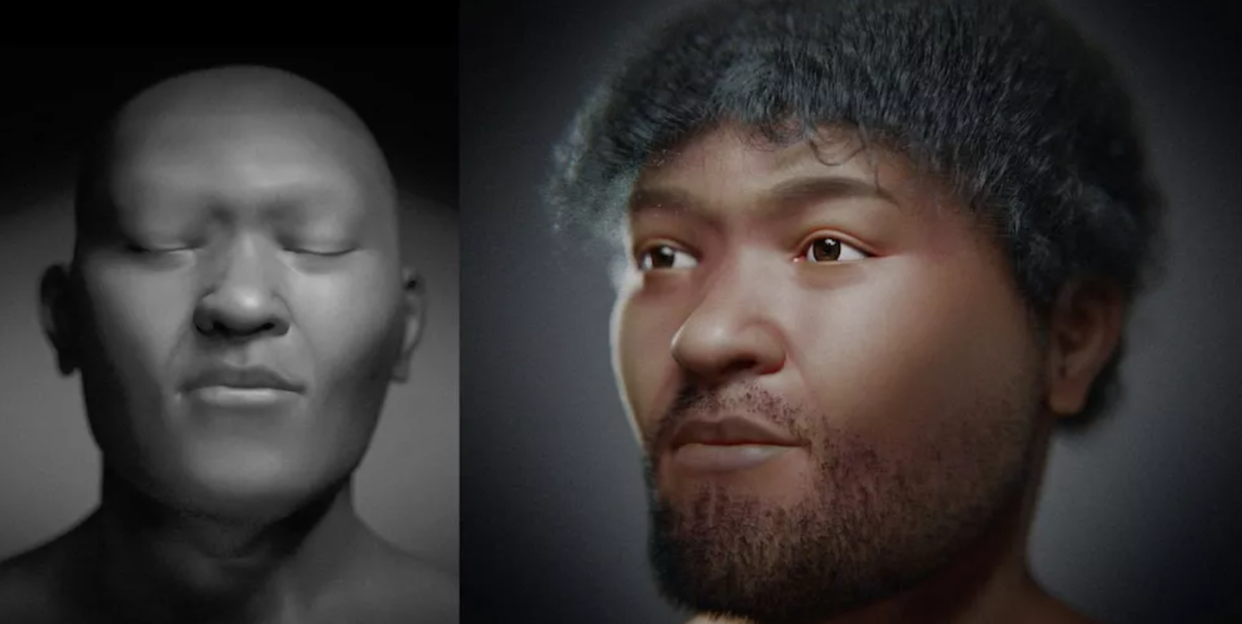Scientists Reveal the Real Face of a 35,000-Year-Old Egyptian Man

For decades, scientists have been putting digital faces to the fossilized remains of ancient people—both famous and unknown.
A new study pieces together the face of a 35,000-year-old man, whose remains were discovered in Egypt's Nile Valley in 1980.
This digital approximation revealed a surprisingly robust jaw (compared to modern humans) and a detailed portrait of a unique era of human history.
Around 35,000 years ago, a man of African ancestry died in what is now Egypt. Predating the first known pharaoh by 32 millennia, no one knows who this man was or what kind of society he lived in. The only archaeological clue was the ax found beside him when his bones were uncovered more than four decades ago at Nazlet Khater 2, an archaeological site in Egypt’s Nile Valley.
Although the details of his life are lost to time, his death is one of the most consequential moments in archaeology. That’s because this man, who stood 5 foot 3 inches tall and was between the ages of 17 and 29, is the oldest known Homo sapiens skeleton in Egypt, and one the oldest in the world. And, crucially, his skull is remarkably intact.
Now, 43 years after its initial discovery, Brazilian scientists have used a process known as photogrammetry to digitally recreate what this ancient man might have looked like. Their preprint study was published (in Portuguese) in late March.
"The skeleton has most of the bones preserved, although there have been some losses," co-author and archeologist Moacir Elias Santos told Live Science. "But the main structure for facial approximation, the skull, was well preserved."
By piecing together detailed images of the skeleton, scientists created two composite images: one black-and-white image in a neutral state and another in a more life-like rendering with facial hair and curly locks. The researchers discovered that the skull itself had a mostly modern structure, though the jaw was much more robust than what’s typically found in modern Homo sapiens, a possible genetic leftover from our Great Ape ancestors.
The practice of photogrammetry in archaeology is decades old, but recent technological developments have made the technique more affordable, ubiquitous, and accurate. At its most basic, photogrammetry creates 3D renderings from 2D images and uses feature matching to capture an artifact, burial site, or (in this case) a skull from every angle.
Over the past several years, scientists have rendered many digital recreations derived from human fossils. In 2016, the University of Glasgow recreated Scotland’s legendary king Robert the Bruce using a cast of the original skull and some population statistics to fill in the blanks (a 14th century Scottish king likely had red hair and brown eyes, for example.)
Other studies have also digitally recreated famous faces found in the same region as this 35,000-year-old specimen. In 2021, scientists from the Face Lab at Liverpool John Moores University in the United Kingdom recreated the face of Ramses II, arguably ancient Egypt’s most famous pharaoh, who reigned from 1279 to 1213 BCE. Using a collection of CT scan data, Ramses II, who died around the age of 90, was even de-aged to when he was about 45 years old.
The Brazilian scientists admit that their digital recreation is only an approximation, but the because of the sheer age of the skeleton (dating back to the tail end of the Paleolithic era), this facial facsimile not only puts a face to a little-known era of human history, but also helps scientists understand an important chapter in human evolution.
You Might Also Like
